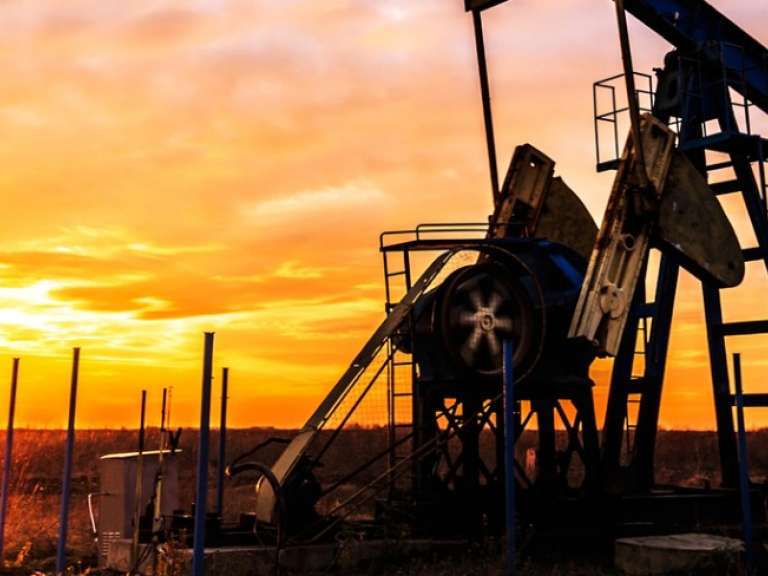The Future of Gas Generation: Renewables, Fracking, and Market Design
Peter Kelly-DetwilerThe future of gas generation will by shaped by its relationship to renewables, regulations to keep costs down, and new drilling technologies.

The price of gas is profoundly affected by the simple concept of supply and demand. While demand may grow—particularly for LNG exports to offshore markets—many observers expect increases in supply to offset any new demand. These supply increases will be driven largely by new technologies that decrease the cost of production.
The future of gas generation in the U.S. will in large part be driven by three main factors:
1. The price of natural gas in coming years.
2. The increased amount of renewables and the role gas-fired generation is playing to complement them.
3. Regulations affecting the future wholesale power landscape.
Two techniques in particular will help keep gas production costs down. The first is the refracking of existing wells. Casey Research reports that this process allows companies to re-enter old wells and fracture them again with improved techniques at a portion of the original cost. Business & Industry Connection Magazine reports that by 2020, refracked sites will represent over 10 percent of wells drilled.
The second way to keep costs down is by increasing the size of the fracking jobs. Organizations are accomplishing this by pumping as much as 25,000 tons of sand into a single enormous well to prop open more spaces in the shale rock and release more hydrocarbons. In just two years, the length of horizontal wells in the U.S. has increased by 50 percent, and some are nearly as long as two miles. These advances in technology are cutting gas production costs down by as much as 50 percent, according to a recent Chesapeake Energy report.
All of this would be good news for gas-fired power generators if they could see solid conventional energy prices. The problem is that lower-priced gas and cheap renewables (with near-zero marginal costs of production) are resulting in softer electricity prices. Many competitive wholesale markets, such as western PJM (principally western Pennsylvania, West Virginia, and Ohio) and ERCOT (Texas), saw record-low spot electricity prices last year. This has squeezed the margins on generators, including coal, nuclear, and natural gas, prompting business leaders to question old ways of doing things. According to Seeking Alpha, Mauricio Gutierrez, the CEO of NRG Energy, recently commented that the traditional merchant independent power business model that has existed for decades is no longer viable.
While these price pressures are intense, the good news for gas-fired generators is that they will likely be the last man standing. Coal and nuclear plants are positioned to succumb to these economic pressures first. Already, thousands of megawatts (MW) of coal generation have retired or switched to cleaner, cheaper natural gas.
In many sectors, gas-fired generators will also survive by shifting their focus to deliver more valuable products, such as capacity and ancillary services. Gas-generation plants that are digitized to provide operators with greater transparency into how hard and how flexibly the plant can be run will likely thrive in a renewable-focused industry. These more robust units will play a critical role in integrating increasing levels of renewables to the grid—and they'll be the most cost-effective resource to do so.
Surprisingly, it does not take many conventional generating resources to address the issue of short-term intermittency that arises from renewables. A recent study for PJM, the country's largest power pool, suggests that the addition of 100,000 MWs of renewable resources would require only an annual average of 1,000–1,500 MWs of additional fast-ramping regulation capability from conventional generators.
A critical element here is how to adequately compensate these conventional-generation resources (mostly gas-fired) to provide the electrons and services required. Additionally, it's important to address what economists and grid planners refer to as the "missing money problem." According to the National Renewable Energy Laboratory, this problem exists where markets are depressed and plants receive insufficient revenue to cover fixed and operating costs.
Grid operators in competitive sectors across the country are currently examining this issue closely to ensure that generation plants are sufficiently profitable to remain in business. Otherwise, maintaining grid reliability may become a serious concern.
At the end of the day, lower-priced gas and clean renewables are a good thing for our society and economy. The savings generated by low-cost renewables are more than sufficient to pay for complimentary gas-fired services and the increased variable O&M costs related to ramping, start up, and shut down.
The future of gas generation therefore lies in the hands of plant operators, who can retool their plants to become more responsive and flexible in this new world of lower prices and higher variability. However, the future also lies in the hands of regulators who must continue to design economic incentives and adequate compensation for gas-fired services that the grid may rely on for stability as renewable adoption grows. With new and better technologies, low-priced gas and renewable resources are going to continue to shape the landscape for power plants, including gas-fired generators. As a society, we need to continue to adapt and plan for these changes.
Smart appliances, electric vehicles, and the smart grid will all play a vital role in consumer energy demand management.
New technologies are establishing the future of wind machines in locations that are currently unable to harness wind power.
Wind power generation and solar can be integrated into the grid with optimal power generating models and flexible conventional generation.